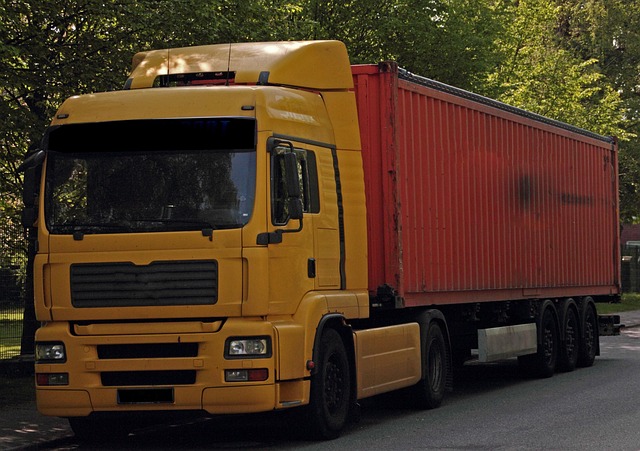Looking to register your car in California? This comprehensive guide breaks down the process step-by-step, ensuring a smooth experience. From understanding essential requirements to securing your vehicle’s unique Vehicle Identification Number (VIN) through dmv vin verification, each phase is clearly explained. Gather the needed documents, complete the application, and pay fees efficiently. Discover everything you need to know to navigate the California car registration process effortlessly.
- Understand California Car Registration Requirements
- Gather Necessary Documents for DMV Visit
- Perform Vehicle Identification Number (VIN) Verification
- Complete Application and Pay Fees at DMV
- Receive Your Registration Plate and Documents
Understand California Car Registration Requirements

Before registering your car in California, it’s crucial to understand the state’s specific requirements. The California Department of Motor Vehicles (DMV) mandates several key steps for car registration, including a comprehensive vehicle inspection known as VIN verification. This process ensures that all vehicles on California roads meet safety and emissions standards. During VIN verification, the DMV cross-references your car’s unique Vehicle Identification Number (VIN) to confirm its identity, age, and history. This includes checking for any outstanding recalls or issues reported by manufacturers.
Additionally, you’ll need to provide essential documentation, such as proof of insurance, a valid driver’s license, and the necessary fees. The DMV offers both in-person and mobile VIN inspection services, providing flexibility for convenient registration. For a seamless experience, ensure your vehicle is up to date with all required maintenance and inspections before visiting the DMV or utilizing their mobile services.
Gather Necessary Documents for DMV Visit

Before visiting the DMV, make sure you have all the essential documents to streamline the car registration process. One crucial step is to obtain a DMV VIN verification – this involves confirming your vehicle’s unique identifier (VIN) with the Department of Motor Vehicles. You can complete this easily through a mobile vin verifier or arrange a mobile vin inspection.
Gathering these documents and ensuring they are up-to-date will help you avoid delays. Remember to bring your car’s title, proof of insurance, and a valid driver’s license. Additionally, have any necessary forms for any liens on the vehicle, as well as documentation related to previous owners if applicable.
Perform Vehicle Identification Number (VIN) Verification

Before you can register your car in California, performing a Vehicle Identification Number (VIN) verification is a crucial step. This process ensures that your vehicle’s details match the information on record with the Department of Motor Vehicles (DMV). You can do this through a mobile VIN verification service, which allows for convenient and accurate checks from the comfort of your home or office.
A mobile vin inspection provides an easy way to verify the integrity of your car’s information. This involves scanning the VIN plate located on the vehicle and cross-referencing it with the DMV database. This step is essential as it helps prevent fraud, ensures vehicle history accuracy, and facilitates a smoother registration process. By having this verification done, you’re taking a significant step towards becoming a legal California vehicle owner.
Complete Application and Pay Fees at DMV

After gathering your necessary documents, it’s time to visit or contact the California Department of Motor Vehicles (DMV) to complete the registration process. The first step involves filling out an Application for Title and Registration form, which can be done online or in person at any DMV field office. Ensure you provide accurate information, including your personal details, vehicle specifications, and current address. Remember, a valid driver’s license is also required.
Once your application is complete, you’ll need to pay the associated fees. These include registration fees, title transfer charges (if applicable), and possibly a DMV vin verification cost for the vehicle identification number (VIN) inspection. You can typically pay by cash, check, or credit card. For convenience, many DMV locations offer mobile vin inspection services with a qualified verifier, allowing you to complete this step without an additional trip.
Receive Your Registration Plate and Documents

After submitting your application for car registration at the DMV (Department of Motor Vehicles) or via their online portal, the next step involves receiving your vehicle’s registration plate and important documents. This is a crucial phase in the process as it signifies that your car is officially registered and ready for use on California’s roads. The DMV will conduct a VIN (Vehicle Identification Number) verification to ensure the accuracy of the details provided during registration. This verification process is essential, especially when conducting a mobile VIN inspection or using a third-party service for added convenience.
Upon successful completion of the VIN inspection, you’ll be issued a unique registration plate and the necessary paperwork. It’s important to keep these documents secure and easily accessible. The registration plate is not just for identification; it also serves as proof of your vehicle’s legal status in California. Ensure that you display it prominently on your car as required by state regulations.
Registering a car in California involves several straightforward steps, from understanding the state’s requirements to completing the necessary paperwork. By gathering all required documents, performing a DMV VIN verification, and filling out applications accurately, you can ensure a smooth process. Remember to keep your registration up to date and always carry your identification and vehicle papers for easy compliance with California’s regulations.
